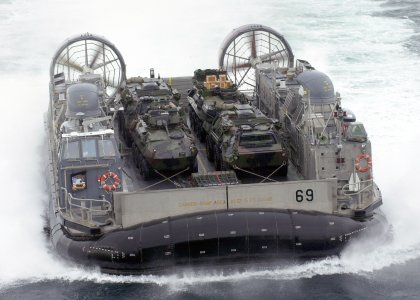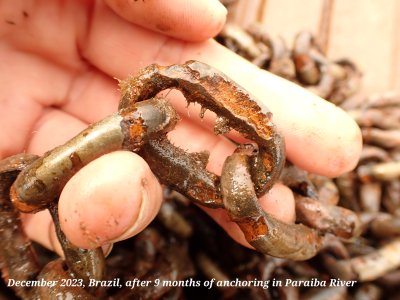geem
Well-known member
Anybody had their anchor chain sheradised? It is supposed to give a harder zinc finish than hot dipped galvanising. A friend had his done and speaks highly of it
I am going to have my chain done. I don't find HDG effective when full-time liveaboard with chain deployed 99% of the time. My 2 year old chain is already showing signs of corrosion. I may well do the anchor as well for similar reasonsHmmm.......................Interesting. For those who don't know what it is.
"Sherardizing is a solid diffusion process in which goods are heated in the presence of zinc dust and inert material as sand. The process is normally carried out in a slow rotating closed container at temperatures ranging from 320 ºC to 500 ºC. The zinc / iron alloyed coating is subsequently zinc phosphated resulting in clean passivated surface. The coating closely follows the contours of the basis material, and uniform coatings are produced on articles, including those of irregular shape. Process follows international standard EN 13811 “Sherardizing. Zinc diffusion coating on ferrous products. Specification”
Sherardize coatings have a mat grey surface and may show scratches resulting from normal contact with other fasteners. Due to the hardness of the coating, such scratches are superficial and not detrimental to its corrosion resistance.
Due to the diffusion on zinc in the base material surface, coating adhesion is better than hot dip galvanized and mechanical galvanized coatings.
Sherardizing coatings show a harder, smoother surface finishing compared to hot dip galvanizing, as well as a better control of coating thickness. These facts allow a better control of friction between cone shape of wedge bolt and their expansion clips, making they convenient for expansion anchors. On the opposite, hot dip galvanizing items may not provide sufficient control of friction sensitive parts, and its operation can be adversely affected. While achievable coating thickness of sherardize are similar to HDG ones, control thickness is superior."
Sourced from Google.
How did you find a sherardizer ?I am going to have my chain done. I don't find HDG effective when full-time liveaboard with chain deployed 99% of the time. My 2 year old chain is already showing signs of corrosion. I may well do the anchor as well for similar reasons
A friend had his done by Sherradising UK in Wigan. Phone number 01942230178How did you find a sherardizer ?
Yes had it done on my last boat - a Westerly- was very happy with the resultsAnybody had their anchor chain sheradised? It is supposed to give a harder zinc finish than hot dipped galvanising. A friend had his done and speaks highly of it
Considering my G40 chain is only 2 years old and starting to rust, it may give a longer life than HDG so worth a try. I doubt it can be any worseYes had it done on my last boat - a Westerly- was very happy with the results


We had similar issues at Portobello in Panama. Anchored in a bay with a couple of rivers discharging into it and deep silty mud. It stripped our galvanising in a week or two.The decks of landing craft are abrasive, to make them non slip, conventional tie down galvanised chain is heavy. TDG offered opportunity to use High Tensile chain allowing use of small, so lighter, chain but not sacrificing strength. The US Navy/Marines found the TDG coating gave a longer life, saving significant replacement costs.
View attachment 182378
If you anchor in tidal rivers extensively and for prolonged periods with high nutrient levels the acid environment will destroy any galvanising (and the chain). This is TDG coated 6mm G100 chain.
View attachment 182381
Anecdotally the Gulf of Thailand has similar issues
Jonathan